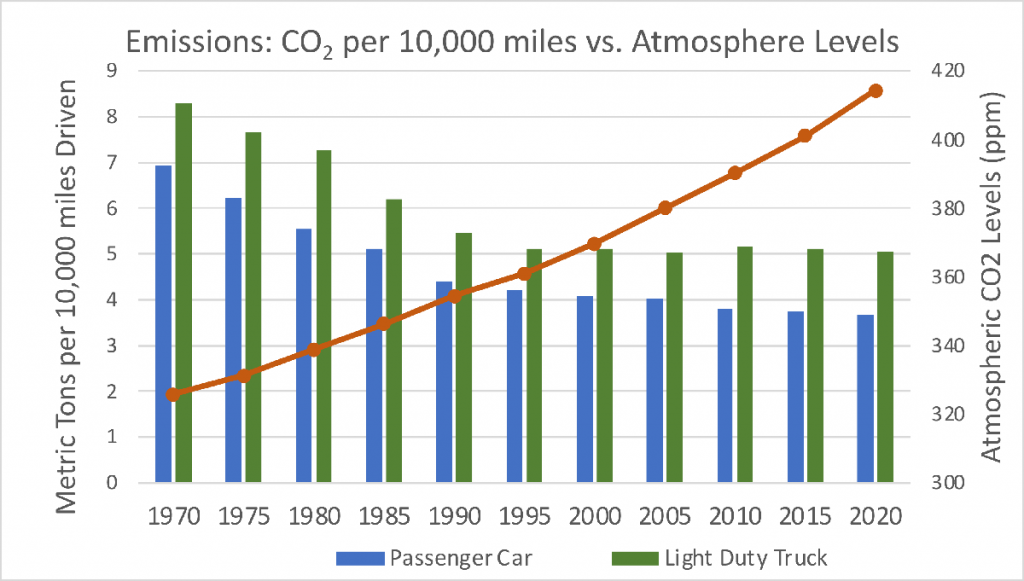Since 1970, the Clean Air Act has mandated reductions in emissions in transportation, industrial and power generation. During this span, large efficiency gains have been made through the reduction of emissions and fuel efficiency advances. As with all improvement projects, overtime the impact of the technologies decrease as systems operate at higher efficiencies. As with the Emission graph below, the CO2 Emissions improvements have effectively plateaued, while atmospheric levels have continued to increase.
 Data Sources: EPA GHG Equivalencies Calculator and Bureaus of Transportation Statistics
Data Sources: EPA GHG Equivalencies Calculator and Bureaus of Transportation Statistics
Prior to 1990, the EPA reported that the management of forest and land acted as a net sink of CO2 emissions. During this period, plants, trees, and soil effectively utilized and absorbed more CO2 than was emitted into the atmosphere. With the CO2 sink in decline and the demand for energy increasing, the emissions imbalance is growing at a substantial rate. The need to enhance our carbon sink’s capacity with Carbon Capture & Sequestration techniques is clear.
 Data Source: U.S. EPA’s Inventory of U.S. Greenhouse Gas Emissions and Sinks
Data Source: U.S. EPA’s Inventory of U.S. Greenhouse Gas Emissions and Sinks
With today’s challenges of emission regulations and the drive for carbon neutrality, AD3 Technologies is providing industrial CO2 emitters custom solutions to store or utilize their CO2 emissions. AD3 is adapting current technologies into solutions utilizing Geologic, Biologic and Technologic Sequestration methods.

